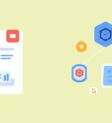
The rise of AI newsletter creation has revolutionized the way organizations and individuals produce email communications. What once required manual effort—content curation, copywriting, and formatting—can now be streamlined and automated, making it easier to deliver personalized, impactful messages at scale. In this article, we will explore how AI is transforming newsletter workflows, showcase leading tools, provide a step-by-step guide to getting started, and share proven tips to maximize your campaign’s impact.
The Evolution of AI Newsletter Creation
The emergence of AI agents in newsletter production marks a significant shift in digital communication strategies. Traditionally, creating newsletters meant laboriously assembling content, drafting engaging copy, and wrestling with design—all by hand. With AI-powered platforms, these challenges are diminishing. Advanced systems handle content gathering, personalize messaging based on reader preferences, and automate the bulk of editorial and design tasks, ensuring consistency in brand voice and quality throughout each edition.
This transformation not only increases efficiency but empowers creators to deliver more relevant and engaging content at scale. Real-time data utilization lets automated newsletters adapt to audience behavior and optimize send schedules for peak engagement. As a result, businesses can devote more energy to strategic and creative planning, while AI manages the repetitive technical tasks.
For a closer look at the broader impact of AI agents in marketing, see our Ultimate Guide to Using AI Agents in Marketing.
Why Organizations Are Switching to AI-Powered Newsletters
AI-driven newsletter solutions are fundamentally reshaping organizational communication. A growing number of marketing teams and content creators now leverage AI to automate repetitive elements such as content generation, segmentation, and performance analytics. Statista forecasts the AI market in content creation will exceed $60 billion by 2025, underpinning this industry-wide trend.
Key operational benefits include substantial time and cost savings. AI tools can rapidly generate curated content tailored to multiple audience segments, eliminating hours of manual labor. These platforms also analyze reader behaviors, enhancing subject lines, send times, and content formats for optimal results—leading to open rates up to 30% higher than non-personalized campaigns.
Organizations from startups to global enterprises cite faster turnaround, improved engagement, and actionable insights as central reasons for adopting AI newsletter creation. As this technology evolves, it helps companies stay competitive and responsive to shifting subscriber expectations.
Step-By-Step: How to Create an AI Newsletter
- Choose an AI Newsletter Platform: Select a platform with robust AI-power, such as Substack, Beehiiv, or MailerLite. Seek features like AI content generation, curation, and simple drag-and-drop design.
- Create Your Account: Register with your chosen platform—many offer free entry-level plans to start without upfront costs.
- Select a Newsletter Template: Choose from customizable templates to match your branding, with options to personalize fonts, colors, and logos.
- Set Up Your AI Content Preferences: Guide the AI by entering keywords, selecting topics, or linking to relevant blogs. The AI will generate suggestions tailored to your niche.
- Curate and Edit Content: Review AI-suggested content, edit headlines, add comments, and rearrange sections for a personalized feel.
- Grow Your Subscriber List: Import contacts or employ built-in signup forms provided by the platform to build your list and monitor analytics.
- Preview and Test: Review your newsletter across devices and send test emails, making any final tweaks as needed.
- Schedule or Send: Dispatch your newsletter right away or schedule it for when your audience is most active—many platforms offer AI-based send time recommendations.
- Analyze Performance: Use the platform dashboard to review opens, clicks, and subscriber trends. Refine your AI settings based on this data to enhance future editions.
Launching an AI newsletter has never been easier—no advanced technical skills required. For more on launching no-code AI solutions, check out our guide on Best No-Code Tools for Building AI Agents.
Top Tools for AI Newsletter Creation: Platform Comparison
Not sure which tool to use? Here’s a breakdown of industry-leading platforms for both beginners and professionals in AI newsletter creation:
- Beehiiv: Drag-and-drop editor, AI-assisted content suggestions, powerful segmentation and analytics, and seamless growth features. Accessible for users of all skill levels.
- MailerLite: AI writing assistant, ready-to-use templates, automation workflows, and advanced segmentation/A-B testing for enhanced targeting and performance.
- Substack: Simplicity-focused with AI tools for content and headline suggestions, strong subscription management, analytics, and built-in community engagement.
- Brevo (formerly Sendinblue): AI personalization, user-friendly visual editor, automation builder, and scalable deliverability for individuals and marketing teams.
- Curated: AI-powered content gathering for industry news, targeted distribution tools, and analytics for actionable feedback and control.
| Platform | AI Integration | Customization | Audience Management | Analytics |
|---|---|---|---|---|
| Beehiiv | AI content & curation | High | Advanced | Detailed |
| MailerLite | AI writing | High | Granular | Advanced |
| Substack | AI headlines/recos | Minimalist | Scalable | Comprehensive |
| Brevo | Personalization | Flexible | Advanced | Robust |
| Curated | AI content curation | Simplified | Targeted | Actionable |
Whatever your priority—ease of use, automation, analytics, or creative control—there’s a platform equipped to optimize your AI newsletter creation workflow.
Best Practices to Increase Engagement for Your AI-Driven Newsletters
Maximizing newsletter engagement starts with personalization. Address subscribers by name, use dynamic content tailored to their interests, and recommend products or articles based on previous interactions. Divide your audience by demographics, purchase history, or engagement level, sending customized messages to each group; for example, re-engagement emails for inactive segments or loyalty offers for high-value users.
Optimize send times using analytics to determine peak audience activity, supplemented by A/B testing to refine timing and content style. Make sure your design is mobile-optimized, keeping copy concise and calls-to-action clear and prominent.
Regularly track open rates, click-through rates, and unsubscribe metrics, then use these insights to tweak your frequency, content mix, and personalization. For more ways AI can streamline your marketing, visit How to Use AI Agents for Content Creation.
Avoiding Common AI Newsletter Creation Mistakes
While AI can supercharge newsletter production, mistakes still happen. Key pitfalls include:
- Neglecting Audience Segmentation: Generic, unsegmented content leads to disengagement. Continuously update your audience profiles for targeted messaging.
- Over-Automation: Unfiltered AI outputs can sound robotic or off-brand. Pair automation with human editorial review to ensure quality and contextual relevance.
- Brand Inconsistency: Failing to build templates and style guides into your workflow can lead to formatting and branding discrepancies.
- Poor Content Sourcing: Relying on outdated or unreliable AI-curated sources risks disseminating misinformation.
- Ignoring Analytics: Not acting on performance reports undermines improvement; use analytics to iteratively refine your strategy.
Combining human oversight with AI efficiency is the best way to maintain accuracy, brand voice, and impact throughout your AI newsletter creation process.
Case Studies: AI Newsletters That Wow
AI-powered newsletters are already redefining how creators connect with their audiences. Here are three standout examples:
- The Rundown AI: Launched in 2022, it quickly grew to over 250,000 subscribers by using machine learning for digestible AI updates. Human editors ensure contextual relevance and tone.
- NVIDIA AI Digest: Weekly roundups blend automatic aggregation of key industry topics with expert review, ensuring high quality and relevance for their readership.
- DeepAI Weekly: Personalizes recommendations through AI analytics, delivering tailored news and resources for high engagement and retention.
Across these examples, best practices emerge: pair AI aggregation with human review, focus on concise and relevant content, utilize analytics to guide topic choice and send frequency, and actively seek reader feedback.
Interested in how AI automation boosts productivity across other domains? Read this Case Study: How One User Doubled Productivity Using TheAgentBot.
Conclusion: The Future of AI Newsletter Creation
The rise of AI newsletter creation platforms is empowering organizations of every size to efficiently reach their audiences with impactful, tailored communications. By choosing the right tools, following proven workflows, and maintaining the critical balance between automated power and human judgment, your newsletters can achieve greater engagement, consistency, and value for your subscribers. As AI continues to advance, those who embrace these strategies will set the standard for meaningful digital communication.






